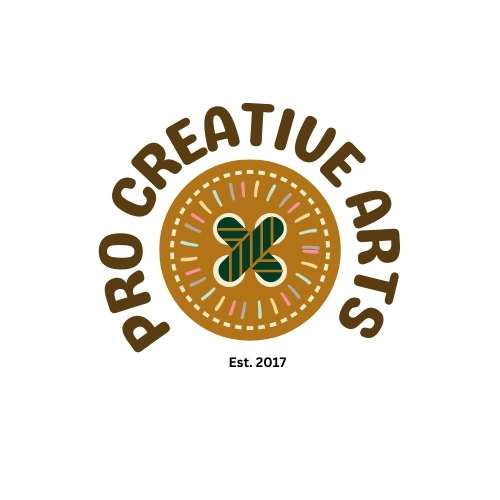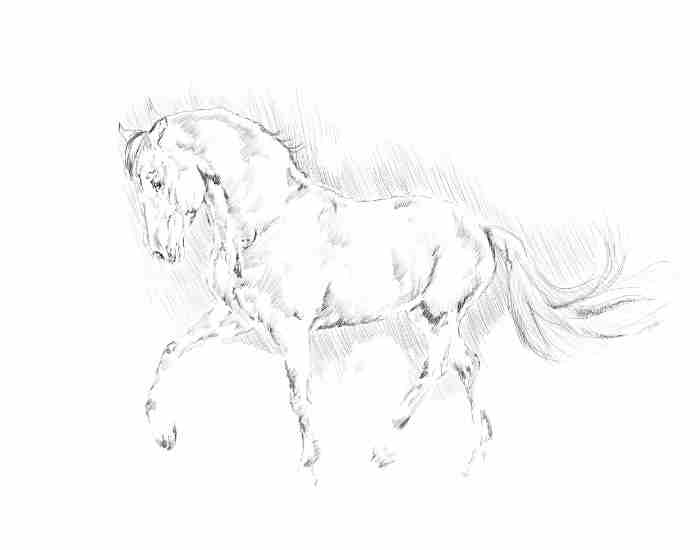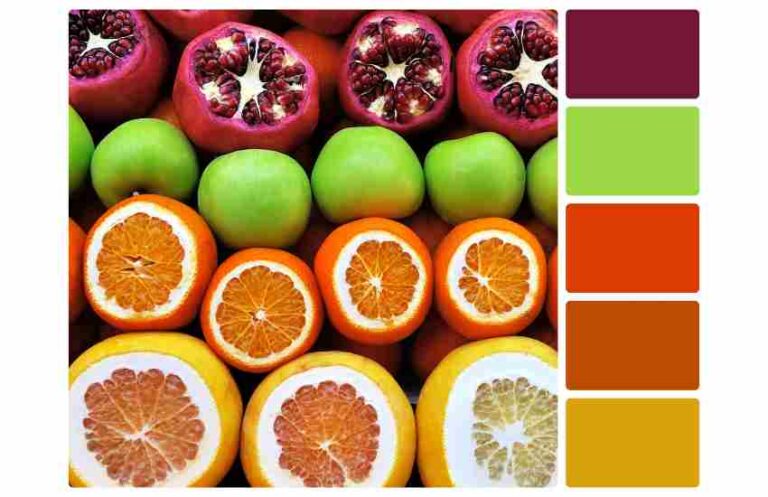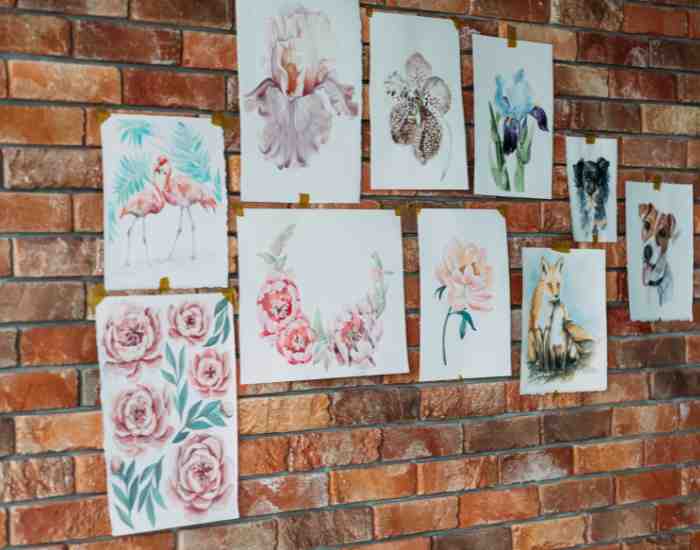If you want to make it big in the art market world, pursuing a career as a professional artist means spending years in an art school. But with technology growing at such a fast pace and improving every single day, getting the right kind of training has never been easier, meaning that you can easily build a successful career in art without having to get a degree in fine arts. As per the 2020 statistics by The Strategic National Arts Alumni Project, nearly 23% of professional artists claimed they have never attended an art university, instead are self taught. This shift definitely marks change in the art world, indicating that self education and what is known along with personal practice plays a huge role.
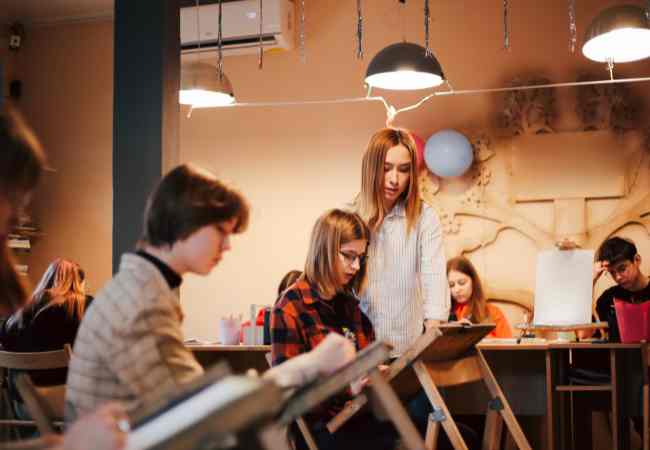
Why is formal education in the art world increasingly optional?
In the past, art schools were considered the only option for people pursuing careers in professional art. However, this is slowly changing. A wide array of online resources and communities has brought to us a new age where skills and knowledge are no longer limited to schools. Research conducted by Harvard University in 2019 argues that learning through self-directed means in art has the capability to be as beneficial, or in fact much more, than the more traditional methods of art education. The most important aspect of this shift is that art school is an expensive venture, with an average tuition of $42,000 in a year in the US.
Who Would Want To Read Such A Complex Guide?
This guide is meant to be utilized by people who think that enrolling in traditional art schools is an unneeded step while approaching their end goal which is becoming an artist. This guide provides and explains in details the concrete measures to take that remove the guesswork when trying to make it in the art world alone while backing their claim with research and successful anecdotes.
Embracing the Self-Taught Journey
In What ways can YouTube and online courses be used as educational tools by new artists?
There are plenty of ways that new artists can access and utilise free educational content to help them perfect their craft At little to no cost, platforms like Udemy, Skill-shared and Youtube allow industry professionals and other successful artists to create and distribute courses. Classic illustration channel “Proko”, for instance, has also seen millions of subscribers to their free tutorials that focus on the fundamental concepts of art. Research conducted by Pew Research Center during 2021 found that 60% of adults in the U.S. used online video platforms for educational purposes. These channels give insights into the workflows of real-time artists instead of just teaching skill based lessons, helping in generating context and making the learning experience better.
What role do books have in the self-guided studies of an artist and why are they able to replace the formal art courses?
Books and self-guided studies are low costing yet highly effective educational tools that give the artist the control over the pace of learning. Some have begun proclaiming self-study as a bid to revolutionise art education, and the books “Drawing on the Right Side of the Brain” by Betty Edwards and ”Color and Light” by James Gurney have become essential over the self-taught methods that would be learned in pricey art courses. In addition, even alongside personal practice these studies serve as good supplement aiding in them to understand and retain theoretical knowledge. According to a 2018 study conducted by the National Endowment for the Arts, out of the artists that participated 75% said that books and publications are essential in their progression and therefore showcasing the importance of self study in the development of an artist.
Crafting Artistic Proficiency
How does regular conduct help in working on the art skills as well as a distinctive artist nature?
The importance of practice as one of the core elements of an artist skill development cannot be emphasized more. As is the case in other disciplines, practice matters and regularity determines the outcome. And, as per the report published in the Journal of Applied Psychology in 2017, daily effort enhancement helped particpants’ scores by 23% in comparison when documentation was less structured. For artists, that means consistency in making art and that is crucial for shaping the artistic brand development.
Getting exposed to an Aritistic expression on a daily basis, helps in developing the technical skills, but adds a personal touch and style to it as opposed to making the artist a similar one to other emerging artists. Their style defines the exceptional artists, and Vincent Van Gogh, alongside Frida Kahlo used to explore themselves and practice an unparalleled amount, adopting distinguished styles in order to create their works. Leased color mixtures and emotions, coupled with daily art practice, art positions the artist into a unique deep driven world.
In What Ways Would The Attempt To Experiment With Different Mediums Enhance Artistic Capabilities?
Art thrives through experimentation and that is crucial in an individuals growth. Exploring different forms of art and mediums helps an individual tap into different depths of their creativity. This is an important practice because it gives an artist or an individual the chance to learn what type of mediums and techniques suit them best.
American painter Georgia O’Keeffe, who is credited with painting flowers that are much larger than life and painting New Mexico’s landscape had it founder of her visual style when she sought out to broaden it with q watercolor, oils, and charcoal. Takashi Murakami, a contemporary artist, is another example of someone who is revolutionizing the art world; he fuses conventional Japanese painting with digital and commercial advertising mediums to create never before seen kinds of artwork and the arguable visual Colombia’s political critique of the United States.
Because of its merits, research supports this strategy. According to a 2022 research released by Artsy, artists who were able to work with a variety of mediums – for example, the digital – were able to gain international praise and recognition, and were 50% more successful because they were able to engage in versatile forms of artistic expression. This in turn enhances technical improvements for the artist as he builds up a mental ability to be innovative and flexible with the new art market.
Creating a Portfolio
How Should Artists Craft a Professional Portfolio?
A professional portfolio is an important item that any artist should have in order to leave a footprint in the world of art. It is not merely a compilation of projects, but rather ordered and presented materials that indicate the range, diversity, and depth of skill of the artist. Based on the analysis conducted in 2021 by Artwork Archive, organized or diversified artists’ portfolios yield good results, as these types of artists are 70% more likely to get exhibitions and sales than those with wider but unstructured portfolios.
To create a strong portfolio, artists must focus on a particular style that would consist of showcasing their technical skills and creativity with varied subject matters. This must be accompanied with a common idea that unifies the pieces while showcasing the artist’s distinct voice or theme. For example, an artist that specializes in painting landscapes could focus on how they started with watercolor to painting with oils.
The Need for A Digital Presence
In today’s technological world, a portfolio that is online is something absolutely necessary. Thanks to places like Behance, ArtStation and personal websites, artists are now able to reach an audience all over the world. According to a 2019 publication by Ibis World titled “Digital Art Market Report”, it was stated that over 80% of sales and inquiries of art are now on the net. Such venues offer opportunities for artists to post high resolution imagery of their work, explain their work in detail, and even sell their works to the public directly.
How to Use the Tools of the Digital World and Social Networking in Their Practice?
Social media and tools of the digital world are an effective way of promoting oneself and more so interacting with the art world. Instagram, Pinterest and Facebook are not just exhibition spaces, but also places to engage followers, buyers and other artists. Properly formulated plans for these services can significantly expand the target audience of the artist.
For example, Instagram features such as stories, live videos, and reels can make it easier for artists have an intimate connection with their audience. This is because artists can use these tools to have a glimpse into their everyday life, share their plans as well as their upcoming projects . For instance, artist Ashley Longshore is able to make millions in dollars through an art businesses she built solely through Instagram which she uses to market and sell her artworks to people without an intermediary gallery.
Moreover, taking advantage of digital resources like email newsletters, personal online galleries keyword optimization, and online ads can greatly improve an artist’s presence on the internet. Such strategies guarantee an increased range of exposure for the artworks and increased traffic directed to the primary sales or portfolio sites.
Networking and community engagement
How Can Artists Build Networks Without Practicing Through School Interactions With Other Artists?
Networking and community engagement are two important considerations that seem to go hand in hand when pursuing a career in the arts; more so in the case of emerging artists who do not have access to an art school. While it can be hard to gain client trust without going through an institution, there are plenty of other ways to create a powerful professional network.
Networking via social media and online forums has become the go to for recent and emerging artists to thrive and kickstart their careers. Platforms such as artstation and deviant platforms are great examples of where budding artists are able to come together, share their work and collaborate with each other. An example of such a case comes from a study conducted by the online art market in 2022 where a staggering amount of 65% of newly developing artists said that these kind of platforms can help greatly enhance their career options.
Not only online social engagement platforms but networking venues such as local workshops, community events, and even exhibition openings can foster the connections budding artists need to further enhance their careers. These events allow artists to meet peers and industry professionals face-to-face, fostering relationships that can lead to collaborations, exhibition opportunities, and even representation. For Example, Art Basel has nurtured and improved the careers of several artists due to the countless relationships they have helped create and enhance.
So what is the importance of mentorships and collaborations in the art sector?
It’s safe to say that both mentorships and collaborations can greatly help in driving personal and professional growth within the art sector. They create new opportunities for learning, innovation and exposure. Within collaborations the combined audience can lead to sharing of techniques, new points of view, and an increase in visibility. Learning from experienced mentors or artists allows for an easier way to navigate the busy and competitive art market while improving ones own artistic practice.
One of the most important mentorship role, and an international artist that i highly revere, would be the mentorship of pop artist Andy Warhol to Jean-Michel Basquiat within the 1980s. Not only did the both of them make art pieces that were way ahead of their time, but also served as career benefactors for Jean as it broadened his horizons in terms of market exposure and production.
According to the American Art Council, artists who receive mentorship aid, have an 80% higher chance of creating a sustainable art career, whilst those who do not have the same chances. Further speaking, the report that we mentioned earlier, suggests that artists who partake in collaborative exhibitions or projects have over a 50% increased chance of getting in contact with potential buyers or gallery owners.
FAQs
What Are Some Affordable Resources for Learning Art Independently?
Independent art students mainly focus on the accessibility and pricing of learning resources. – Taking charging online courses for drawing and digital arts is economically favorable. The lack of charges is null components while others have trivial fees. Online Services such as Coursera, Skillshare and Udemy are helpful in these regards. It is interesting to note that more than 70% of self-educated artists reported taking an average of at least one online course when inquired by the 2023 Online Learning Consortium study.
Moreover, books are still a great asset. “Art & Fear” by David Bayles and Ted Orland, or “Steal Like an Artist” by Austin Kleon offer practical and useful tips at a reasonable price. These can often be found at public libraries or second hand bookshops at little or no price.
How Can I Balance Time Between Learning How To Paint And Actually Making Paintings?
It is important to balance those willing to learn with those who want to make original pieces to ensure the steady flow of creative energy. It may be useful to establish a clear working calendar that divides learning time and time for hands-on activities. For example, reserving mornings for technique-based practice and afternoons for composing original pieces may work. Research conducted by the University of Illinois has proven that the Pomodoro Technique, where time is broken down into blocks, enhances attention and recall when undertaking tasks, including art activities.
How Do I Receive Feedback on My Artworks Outside of an Art School?
As an artist, constructive critiques can help you to develop you art for the better, and as such using online platforms like DeviantArt and Behance or even joining specific forums will allow you to receive critiques from a myriad of people from ales to professional artists. Additionally, joining community events and showcasing your work in art exhibitions in your locality would aid you in getting feedback as well. The 2022 survey conducted by Artsy showed that 85% of the artists growth was greatly impacted by the feedback they received online.
When Do I Sell My Artwork?
Once you realize that you are content with your work and that it reflects your skill and creativity, it is time for you to consider marketing your services. The first step in doing so is creating a small library of your art, which would allow you to market your work when necessary. If doing such is not feasible, remember to have snapshots of your art ready since they allow you to take part in shows and sell your art. The article published by Art Business Today stated that it usually takes two years for marketers to build a clientele and establish a portfolio.
Conclusion
The next section shall be the summation of the entire study for this research. Pursuing an art career without a fine arts degree has its own benefits. The most pronounced benefit is reduced financial burden, temporal and stylistic flexibility and the freedom of creating an artistic identity that deviates from what education mandates. This approach not only makes the field of art more accessible to people but stimulates a deeper and more intimate understanding of their artistic roles within society.
Why would someone not commend and be excited to come on a self-taught artist path? While self-education is an option, it is critical to point out that it is not the sole way to break through the „wall” in the art scene. Artists are advised to learn from as much experience as possible and undertake this journey through art, no matter their time period in life. There exists a plethora of resources which can easily be utilized from living out of one’s car to waiting to utilize a family inheritance for furthering their dreams of entering the art world.
If you are ready to walk the talk and begin the journey, go ahead and take an active step by registering for a short free online course or enrolling in a local or an online art community and developing a daily practice. Remember every small step is moving to the side or up depending on how you view the position equilibrium towards your artist goals. Art is a limitless realm, use every fighting chance to learn, make try various forms of art be it a piece, sport or tools.
More Post
